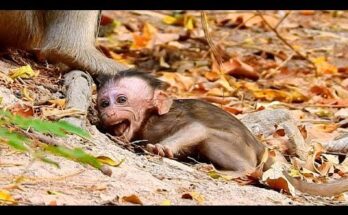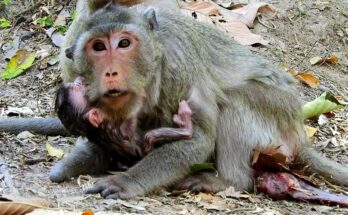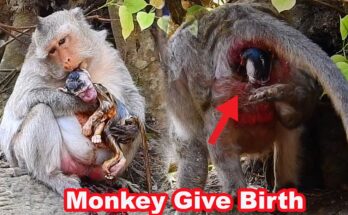The arrival of a newborn baby monkey hybrid is an extraordinary event that sparks curiosity and fascination among animal lovers, researchers, and wildlife enthusiasts alike. A hybrid monkey typically refers to an offspring born from the union of two different monkey species or subspecies, blending unique traits from both parents. Such hybrids are rare in the wild due to natural barriers like habitat separation and behavioral differences, making each birth a remarkable moment worthy of attention.
From the very first glimpse, a newborn baby monkey hybrid presents a captivating mixture of physical features that reflect its diverse lineage. Its tiny frame, often no bigger than a human fist, is covered with soft, fine fur that may display a patchwork of colors and patterns inherited from each parent species. The face might carry distinctive markings — perhaps the curious eyes of one species combined with the muzzle shape or ear size of another. This blend of traits not only creates a visually intriguing creature but also offers insights into how genetics play a role in the evolution and adaptability of primates.
The hybrid baby’s behavior often reflects a unique combination of instincts and characteristics from both its parents. For instance, it might exhibit a balance between the social tendencies of one species and the foraging habits of another. Observing the newborn’s first interactions with its mother and the surrounding troop can be both heartwarming and scientifically valuable. The mother’s acceptance and nurturing of the hybrid infant are crucial for its survival, especially since some primate species are highly selective when it comes to caring for young that differ from their own kind.
Raising a hybrid monkey infant poses specific challenges and learning opportunities for both the animal and caregivers. In captivity or wildlife sanctuaries, specialists monitor the baby closely to ensure it receives proper nutrition and care, particularly if it faces any health issues related to its mixed heritage. In the wild, the hybrid’s ability to adapt depends on its inherited traits and the environment it grows in. The blending of species might give it advantages, such as greater resilience to diseases or broader dietary options, but it could also pose challenges in terms of social integration within its troop.
The phenomenon of a newborn monkey hybrid also ignites discussions about conservation, genetics, and the impact of habitat loss. As forests shrink and different species are forced into closer proximity, hybridization may become more common, influencing the genetic diversity of monkey populations. While hybrids can contribute to genetic variation, they also raise questions about preserving species purity and the natural evolutionary paths of primates.
Scientists seize the opportunity to study hybrid monkeys to better understand primate genetics, evolution, and behavior. Each newborn provides a living laboratory for exploring how species boundaries blur and what that means for the future of monkey populations worldwide. Through careful observation and research, experts hope to learn more about the adaptability of primates in a changing world.
Ultimately, the birth of a newborn baby monkey hybrid is more than just a biological curiosity; it is a symbol of nature’s complexity and resilience. It reminds us of the delicate balance within ecosystems and the endless wonder of life’s ability to adapt, survive, and thrive across generations.


